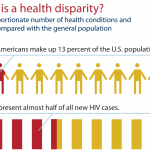“Like Google” requests literally every client. They want an experience that simple, that easy… and also that ubiquitous. Most organizations dream that people around the world will go directly to their website for every possible need. They want to provide “a one-stop shop consumer experience”.
You know you’re nodding. It does sound simple. You too want to offer the one-stop shop. But let’s look at another way of seeing the one-stop shop.
“A one-stop shop consumer experience. You’re chatting with your friends, you’re talking about the latest music, about the election; all of it is happening in our virtual paper store.”
Ryan, The Office, Season 4 Episode 15
When you read the quote, it sounds ridiculous. (And it’s meant to be – yes, The Office was a comedy.) What makes it sound so ridiculous for a paper company to provide a one-stop shop, yet a search engine is now the place we collaborate on documents and get our driving directions?
And… can healthcare become a one-stop shop?
Why Does a One-Stop Shop Appeal?
I believe there are three reasons a one-stop shop experience appeals. The first two reasons are true in every industry, and the third is specific to healthcare.
#1: Profit
Very few organizations can survive without growth. Much like the military, the choices are move up, or move out. To that end, if your company has successfully built a single app or experience, you are likely to follow up by building a second, or trying to expand to take over other apps.
#2: Evolution
Steve Jobs once said “If you don’t cannibalize yourself, someone else will.” What he meant was that every product, every business, every idea will eventually be replaced by a newer, better version. You can build it, or a competitor will.
To that end, if an organization has built something great, it makes sense to think about how to improve it. Improving it – particularly in healthcare – often means connecting with other platforms. And why connect when you could just replace?
#3: Security
I’ve worked in UX for nearly a decade. I’ve worked on products for retail, finance, media, technology, SAAS, product management, and more. But I’ve never seen a field nearly as complex as healthcare. Because it’s so complicated, it’s hard to securely and accurately pass information from one system to another. We see it all the time with pharmacy experiences that don’t match what the doctor said, or records that don’t pass correctly from the ER to the hospital.
Obviously, patients’ lives would be simpler if providers, pharmacists, and everyone else used the same system, right?
Healthcare: One-Stop Shop
In a recent TechCrunch article, Chris Hogg addressed “why ‘one app to rule them all’ is not the future of digital health”. Among other things, he explained:
- it ignores the way people use technology
- it forces people to use a single app, regardless if it offers them the complexity they need
- “[w]hen one platform tries to excel in a vast number of areas, it usually ends up doing them all badly”
Chris makes some good points, and they help to explain the difference between an app and an ecosystem, as well as the challenges healthcare has ahead of it.
Let’s work backwards
One App Can’t Excel in Numerous Areas
From Facebook to Adobe to Amazon, large organizations have long been known for acquiring smaller companies to do what they do best. The larger company provides the financial benefits, and the smaller company becomes a department with more resources and specialized knowledge. No, it doesn’t always work, but even on a smaller scale, organizations like Moz or Hubspot see the benefits of expansion.
What’s key here is that my examples are all ecosystems, not single apps. If Amazon had purchased Whole Foods and then closed all Whole Foods stores and forced grocery shopping to happen on Amazon.com, we might have a problem – as Chris calls it, “one app to rule them all.” But as an ecosystem of retail and produce, the Amazon/Whole Foods world is working (more or less).
Takeaway: even a company building only a single platform will provide a better experience if they consider the larger ecosystem (regardless of whether they control it). That’s why I always recommend journey mapping to my clients.
Don’t Force People to Use a One-Stop Shop
Often, the fight for a one-stop shop comes from multiple companies trying to solve the same problem. And of course, because of the free market this means there are a lot of overlapping products.
In the running community, for example, we have plenty of overlapping products to help us track our data, share it, and ultimately prevent injury and train more effectively. I’ve used Strava, Runkeeper, and MapMyRun. But again, to Chris’s point, all three of those apps connect nicely with my Garmin watch, making it an ecosystem.
And yeah, it would be nice if my Garmin watch and my Google Calendar and my Microsoft Outlook work calendar all synced more seamlessly. But those are competing ecosystems, which brings us to the next challenge.
One-Stop Shops Ignore the Way People use Technology
For every Strava (my current tracking platform), there must be a Garmin, happy to work with everyone. Garmin also has their own tracking platform, as it happens – Garmin Connect. I don’t like Garmin Connect, and I appreciate that Garmin doesn’t stop working when I pair the watch with Strava instead. If Garmin watch required me to use the Garmin Connect app, it would be ignoring my interest in finding the option that best suits my needs.
Will there be a One-Stop Healthcare Shop?
Healthcare is unlikely to have a smooth ecosystem anytime soon. The security challenges are large, the user needs are complex, and the hospital and insurance systems are not (yet) set up to work well together. But I would love to see one succeed.
When it does, what will it have?
- Secure connections to EHRs, smart watches, and other systems and consumer goods
- Freedom of choice, to connect a single product with multiple (but not necessarily all) other products
- Clear journeys of what patients need and how they accomplish their goals
- Plain language
Here’s to the future!


